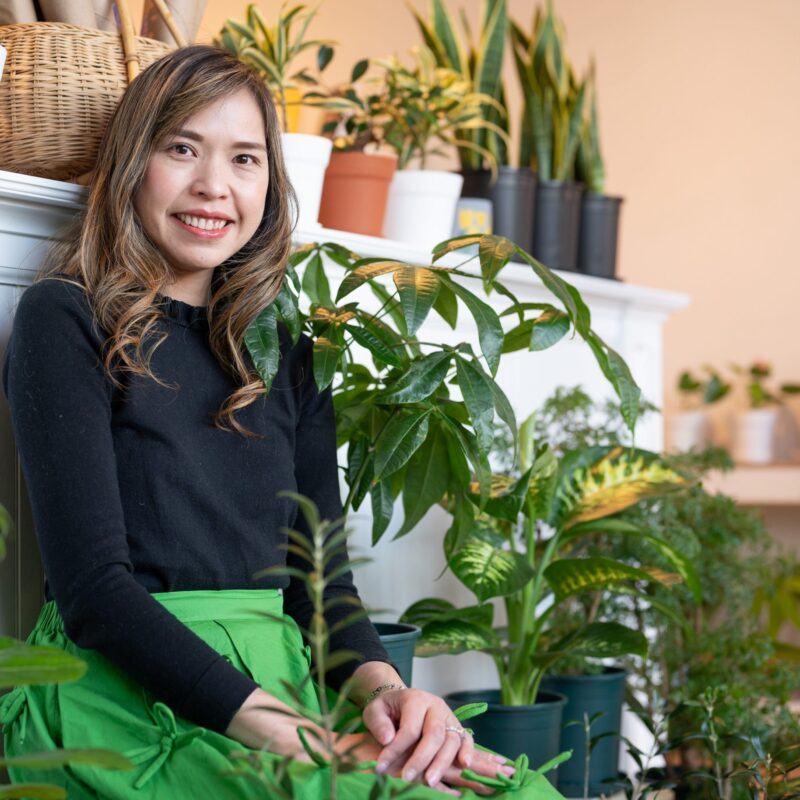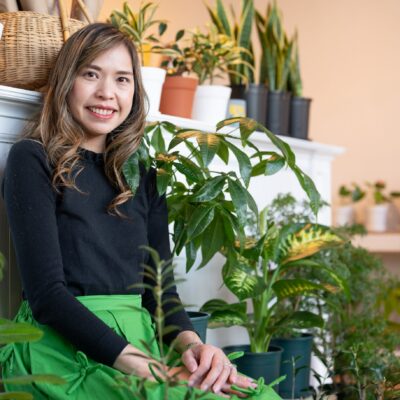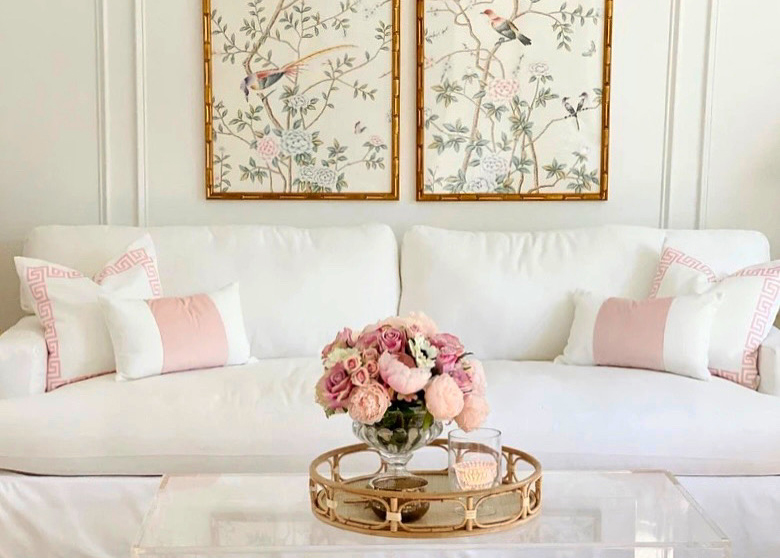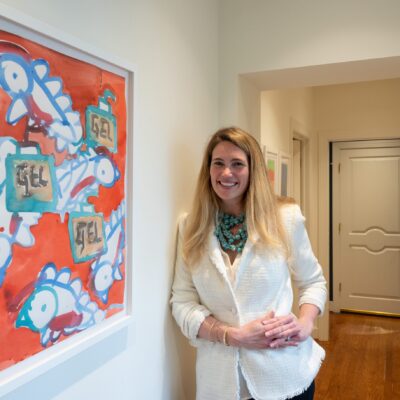Bill Mauzy has been a Virginia resident all his life. As he says, it’s a wonderful place “to make art and gardens,” which, as a landscape architect with Waterstreet Studio and a photographer, is exactly what he does. “I’ve come to consider myself more as an artist who practices landscape architecture than a landscape architect who also makes art,” Mauzy says. But the two are far from mutually exclusive. In fact, his photography work often affords Mauzy the chance to see his work through a different—pardon the pun—lens.
“It’s a challenge, but the art work helps and continually points to new ways of working and thinking about the design process,” he says. Here, he tells us about getting into landscape architecture, how his music factors in and what he’s working on currently.—Caite White
Why landscape architecture?
“It is not enough to be busy. So are the ants. The question is: What are we busy about?”—Henry David Thoreau
At some point in the past I decided that I wanted to spend my time and energy creating beauty and contributing something positive to the world. The idea of being a landscape architect lay dormant until around 2000. The birth of my son that year spurred me to take a longer view, and I was accepted to the Master of Landscape Architecture program at Virginia Tech in 2003.
In hindsight, landscape architecture seems inevitable in my life. From the time of my earliest memories, I’ve been drawn to the natural world, plants and animals. When I was a child my family would make frequent trips into the mountains of Virginia and West Virginia to visit grandparents. At a very early age I remember being fascinated by the landscapes we traveled through and curious about how they seemed to affect emotions. I also had a creative streak and spent much time drawing, making models, building forts. Then as a teen I learned to play banjo and spent many years making music in local bands.
One aspect of landscape architecture that I find particularly appealing is its embrace, when well practiced, of impermanence and change. In fact, in most instances, our work is reliant on change. The work of making a garden is only begun when the construction ends. The only constant in life is change. In this way, I feel like my work is a practice not only of making places and space, but also a practice of understanding life.
Why did you choose to practice in Virginia?
I’ve never been one to follow a career from place to place. To the contrary, I think place has profoundly influenced my sense of what career and avocation might be feasible and desirable. In recent years I’ve traveled more, been tempted by and even fallen in love with the mountain west, the Southwest, coastal New England, the coastal South, but Virginia remains a wellspring of inspiration and comfort and is simply the place I want to be.
The somewhat abstract, hard-to-define concept referred to as sense of place is a key factor in my creative endeavors. It’s important both as a point of departure and as a grounding element that informs meaningful work. I identify deeply with the Shenandoah Valley, the Appalachian Mountains and, to a lesser degree, with the South. Being a creative person or an artist from the South has a particular gravity. There’s the emotional weight of the landscape, its central position in the imaginative lives of those from the South, memory, the weight of history.
The photographer Sally Mann writes about this well in her book, Deep South: “To identify a person as a Southerner suggests not only that her history is inescapable and formative but that it is also impossibly present. Southerners live uneasily at the nexus between myth and reality…against a backdrop of profligate physical beauty.”
What a wonderful setting for the making of art and gardens.
What was childhood like and how did it lead you to design?
One of the formative experiences of my childhood was being present for the construction of my parents’ house. They were do-it-yourselfers. While they were building, I watched and learned fundamental lessons about how things get built and the value of hard work. I also spent many happy hours making Tonka toy-sized roads, rivers and hills out of the “mountain” of topsoil stockpiled on site. I think this is where the idea of working with the land was planted.
Also, my mom was an avid gardener and plant collector. She often recruited me to help her in our garden. That must have made an impression on me. In high school I began working with landscape contractors during the summers.
I began playing bluegrass and old-time string band music at the age of 12, eventually learning to play, with reasonable efficacy, all of the typical instruments except fiddle. There’s something elemental about good mountain music—it seems to have seeped into my soul. Though I no longer play seriously, music is still important to me and the experiences I had—the lessons I learned—heavily influence both my design work and photography. The feeling of a groove. Simplicity. Soul. Rhythm. Timing. Syntax. Balance. Harmony. Counterpoint. How to convey emotion. Persistence. Practice then trust in intuition, i.e., perfect then forget. It’s so interesting to me how artforms that have the outward appearance of being completely different are in fact so similar in fundamental ways.
On process: How does it begin?
The most critical aspect of process for me is spending focused time with a place, without thought of outcome, developing an intuitive sense of it. Ideally this comes long before pencil is put to paper. Following that, there’s typically a period of study that involves analysis of the various environmental, legal and social factors that affect the site. Then, I try to forget it all. Not literally forget, but try to let the facts of place and program, once considered, fall away to the background, so that meaningful, unforced design solutions can begin to emerge.
The importance of this practice has been reinforced by my work in photography. My approach to photography relies heavily on intuition, looking beyond the readily obvious surface appearance of a thing or place, and when it’s all working, true seeing. The technique can be applied to garden design and site planning with equal effectiveness. Design iterations and ultimately solutions proceed from that basic understanding.
Beyond those initial steps, the design process at Waterstreet Studio is highly collaborative. Ideas are freely exchanged between junior and senior designers. There’s an open dialogue between our designers and clients. It’s always our goal to make spaces that meet our clients’ needs and inspire them. No one person can take credit for the outcome.
What inspires you?
The wild. Time spent in the wild. Trees. Mountains. Streams. Poetry. Simple, honest, soulful music. A handful of photographers. Gardens that stand the test of time. Good conversation. My family.
When I make photographs I concentrate on subtleties: light and shadow, surface variations, temporal changes, precise spatial relationships, perceived mood, emotion, and I try to preserve these qualities in the prints I make; to create the potential for visceral experience by the viewer. All these qualities are available to the garden-maker as well, but I think the intensity with which I engage these when making photographs is altogether a different experience. Whenever possible, I try to bring that intensity to the experience of a site and translate that into the built work.
Eastern philosophies have profoundly shaped my life and work. While I don’t identify with the religious tenets of Buddhism and Taoism, the worldviews and sensitivities conveyed in certain writings from those traditions, along with the paintings, poetry and other art they inspired, have provided a structure and touchstone for the growth of my own work. The natural world as source, solace and inspiration. The role of artifice and metaphor. Embrace of balanced asymmetry. Recognition of the importance of emptiness. Celebration of the seasons. Beauty in impermanence, change and even death. I don’t pretend to fully understand these ideas and their implications for garden making, but I intuit their rightness and can see that my work is increasingly less plastic, more authentic.
What are you currently working on?
I am heavily involved with several projects now under construction including an enchanting mountainside garden that complements a rustic log cabin off Taylors Gap Road, a garden renovation for a former caretaker’s house in Farmington and a meditation garden for a historic residence near Milton. We are also in the early stages of implementation for a sanctuary garden at the Blue Ridge School and developing planning documents that will guide improvements to the historic garden at The Valentine museum in Richmond.
In addition to landscape architecture, I’m quite busy with photography at present. In the near term (this spring) I’ll be working to put finishing touches on a long-term project that focuses on spring ephemeral wildflowers of the Appalachian and Blue Ridge mountains. I also have a number of commissions for architectural and landscape photography in the planning stages. Most notably, I spent the month of February in Zion National Park as an artist-in-residence with the National Park Service. Zion is a crown jewel of the national park system, and I am honored to have been selected to serve in this capacity.
To see Bill’s photography work, visit mauzyphotography.com.










